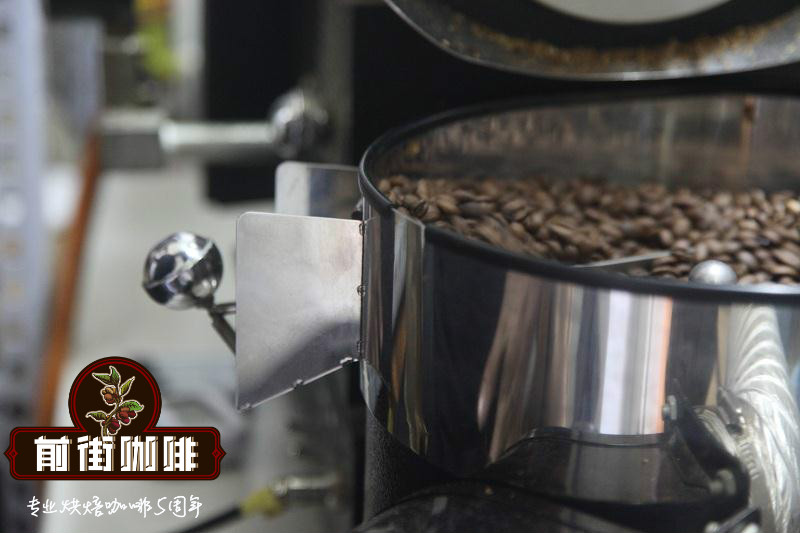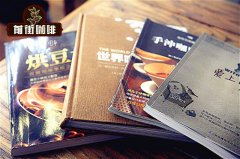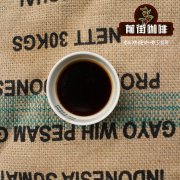What is Brazilian Datela Coffee? World's largest coffee producer Brazilian coffee flavor

Professional coffee knowledge exchange more coffee bean information please follow the coffee workshop (Wechat official account cafe_style)
Brazil is the largest coffee producer in the world, accounting for about 30% of coffee production, but because Brazil is located in tropical rain forest areas with relatively flat terrain and few high-altitude mountain forests, most coffee is grown in low-altitude non-volcanic soil areas. And there is not much shade for shading, resulting in the disadvantage that Brazilian beans grow quickly, but the density and soft flavor of coffee does not change much. Coupled with large-scale machine harvesting of coffee beans with a wide range of maturity differences in coffee harvesting at the same time, so that the quality of Brazilian beans is not particularly outstanding has always stayed in the category of commercial beans.
After 2000, due to the inducement of coffee competition, the quality of coffee beans produced in the high-altitude areas of the south was appreciated, mainly by the farms around the Minas platform, and the coffee quality was also the largest among Brazilian beans, such as Sirado in the west of Minas and Matas in the east, Bashiya in the north or small farms in the south, Minas almost became synonymous with Brazilian boutique coffee. In recent years, the coffee competition is so accurate that it is separated by treatment (water treatment, half water washing, half sun drying), which has developed a variety of flavors and taste, which is completely different from that of traditional Brazilian coffee. In particular, the half-sun method and the sun method perform best, the aroma of clean low-acid fruit increases, so that the rich chocolate flavor is reduced.
Daterra coffee in Brazil has sprung up in the past year or two. Instead of being a single coffee farm, it brings the high-altitude coffee farms in the Minas Gerais region into a centralized middle and back section, then dries and bagges for centralized storage management, and sells it to the world under the name of Datra Coffee Farm (or company) through a novel marketing method. The member farms of Daterra Coffee are all above 1150 meters above sea level, with an average annual temperature of about 22 degrees. All participating farms must comply with the spirit of the Rain Forest Alliance (RFA) to protect the primeval rainforest and improve the community living environment and family income of the participating members.
The coffee is sent from the production site to the treatment plant immediately after harvest, and the treated coffee water comes from the underground well water because no chemical composition is added to the process and can be used for irrigation without any damage to the natural environment. The Datra sun beans are slightly different from other natural sun drying methods in Brazil. After drying the raw beans on the bean drying farm for 3 days, the raw beans are moved to a dryer with hot water passing through the tube as a heat source to keep the temperature no more than 30 degrees Celsius. Until the overall humidity of the coffee bean drops to 11 percent, then move the coffee to a special wooden box, about 60 days later, the coffee has a uniform humidity and the same liveliness. It is not until the sales order is received that it is polished and packed in gunny bags. Datra Coffee (Daterra) is a top Brazilian coffee grown in the pristine rainforest and is the most important partner of the Rainforest Alliance in Brazil.
Shallow baking City (fragrance): Brazil Datra Manor sunrise beans in the light baking fresh green orange acidity is strong bright and high-pitched, which is rare in other Brazilian beans (acid close to Yegashev shallow baked grapefruit acid), but not long-lasting turn into orange water sweet, with a grand sesame peanut aroma, the whole taste complex and changeable, but does not jump out of the round feeling Huigan can smell the sweet smell of vanilla almonds from the nose.
Heavy baking (Full-City): this baking degree has a good soft and subtle cherry acidity, rich and smooth aroma of milk chocolate, clean light with smooth ester taste, honey maltose sweetness, sweet hazelnut as transparent and delicate as silk.
Since the introduction of coffee trees from French Guiana (Guyana) in 1720, coffee production has gradually become a science. Before 1990, the Brazilian government carried out strict monitoring of the coffee industry, with both strict intervention and price protection measures, and the state has been implementing minimum price protection measures for farmers, resulting in coffee overproduction. In the period before World War II, the surplus stock reached 78 million bags.
Later, it had to be burned by fire or destroyed by throwing it into the water.
Since the opening of the free market in 1990, the original Brazilian Coffee Authority (IBC) has been replaced by the National Economic Association of ──, the country's non-investment administrative body, which pursues a policy of non-interference and allows producers to negotiate directly with exporters. The business activities of exporters are supervised by the government legislation, and the relevant departments register legitimate exporters. There are many kinds of Brazilian coffee, and like other Arabica coffee, most Brazilian coffee is not washed but dried, and they are classified according to the name of the state of origin and the port of transport.
Brazil has 21 states and 17 states produce coffee, but five of them produce the largest, accounting for 98% of Brazil's total national production. They are Parana, Sao Paulo, Minas Gerais, Espirito Santo and Bashiya. The southern state of Parana has the most astonishing production, accounting for 50% of the total.
Brazilian coffee is characterized by low acidity, rich oil, rich mellow, suitable for medium roasting and Italian roasting formula coffee beans.
END
Important Notice :
前街咖啡 FrontStreet Coffee has moved to new addredd:
FrontStreet Coffee Address: 315,Donghua East Road,GuangZhou
Tel:020 38364473
- Prev

New York Futures: Arabica coffee falls to its lowest level in more than 13 years as Brazil is about to harvest
Professional coffee knowledge exchange more coffee bean information please follow coffee workshop (Wechat official account cafe_style) Reuters New York / London April 1-ICE Arabica coffee futures fell to a low in December 2005 on Monday as the approaching harvest in Brazil, the main producer, put pressure on an already oversupplied market, while New York cocoa futures rose to more than two months.
- Next

What are the benefits of drinking coffee?
What's the advantage of drinking coffee? Coffee contains certain nutrients. Nicotinic acid in coffee contains vitamin B, which is higher in roasted coffee beans. And there are free fatty acids, caffeine, tannic acid and so on. Coffee is good for the skin. Coffee can promote metabolic function, activate digestive organs, and has a great effect on constipation. Taking a bath with coffee powder is a kind of thermotherapy, which can be reduced.
Related
- What documents do you need to go through to open a coffee shop? coffee shop coffee shop certificate processing process
- How to purchase Coffee beans in small Cafe how to choose a suitable supplier for domestic Coffee supply Company
- How to drink Starbucks Fragrance White Coffee? how to make Australian White Coffee? what Italian coffee beans are recommended?
- The Story of Flora Coffee: the name of Flora Coffee Bean and the implication of the Flowers on Florna Coffee
- How much does a cup of coffee cost? How much is the profit of a cup of coffee? What is the profit of the coffee shop in a year?
- Yunnan small Coffee, known as "fragrant Coffee", introduces the characteristics of Alpine Arabica Coffee producing areas in Yunnan, China
- 2023 latest Starbucks full menu price list how much is a cup of Starbucks coffee what is better to drink the most popular hot and cold drinks recommended
- Starbucks different kinds of Coffee Price list Starbucks menu 2023 Top Ten Best drinks in Starbucks
- Starbucks Spring praise Comprehensive matching Coffee Bean theme Story Packaging implication and taste description
- The cost of a cup of coffee latte American coffee cost price and selling price

